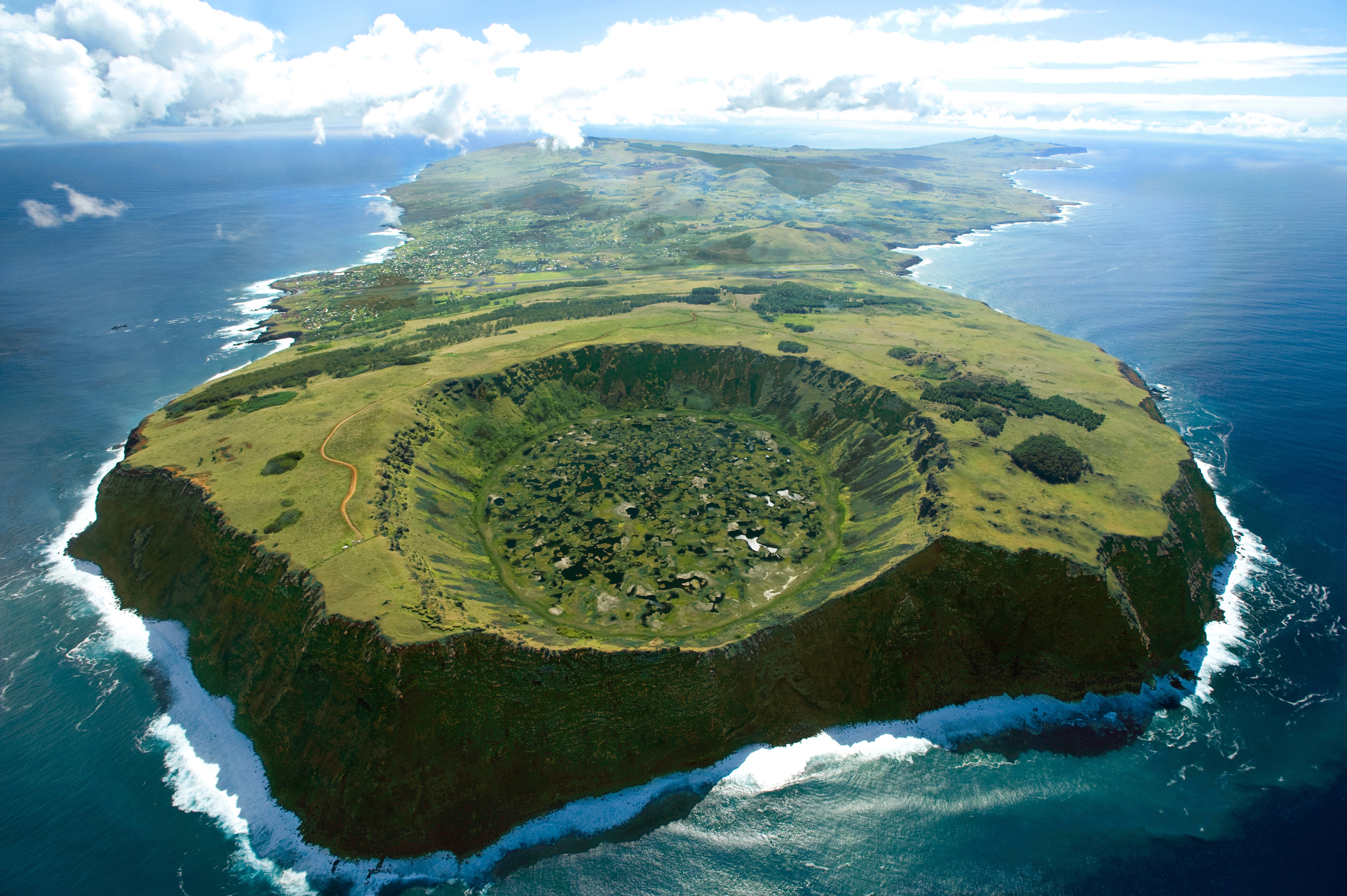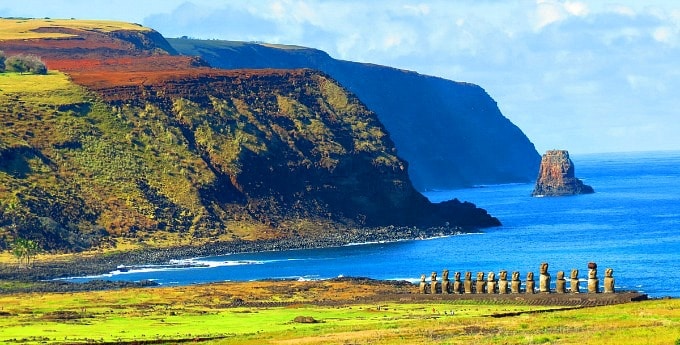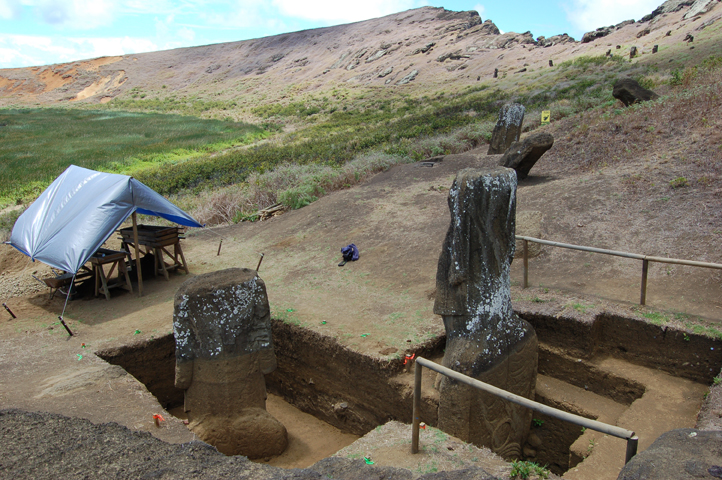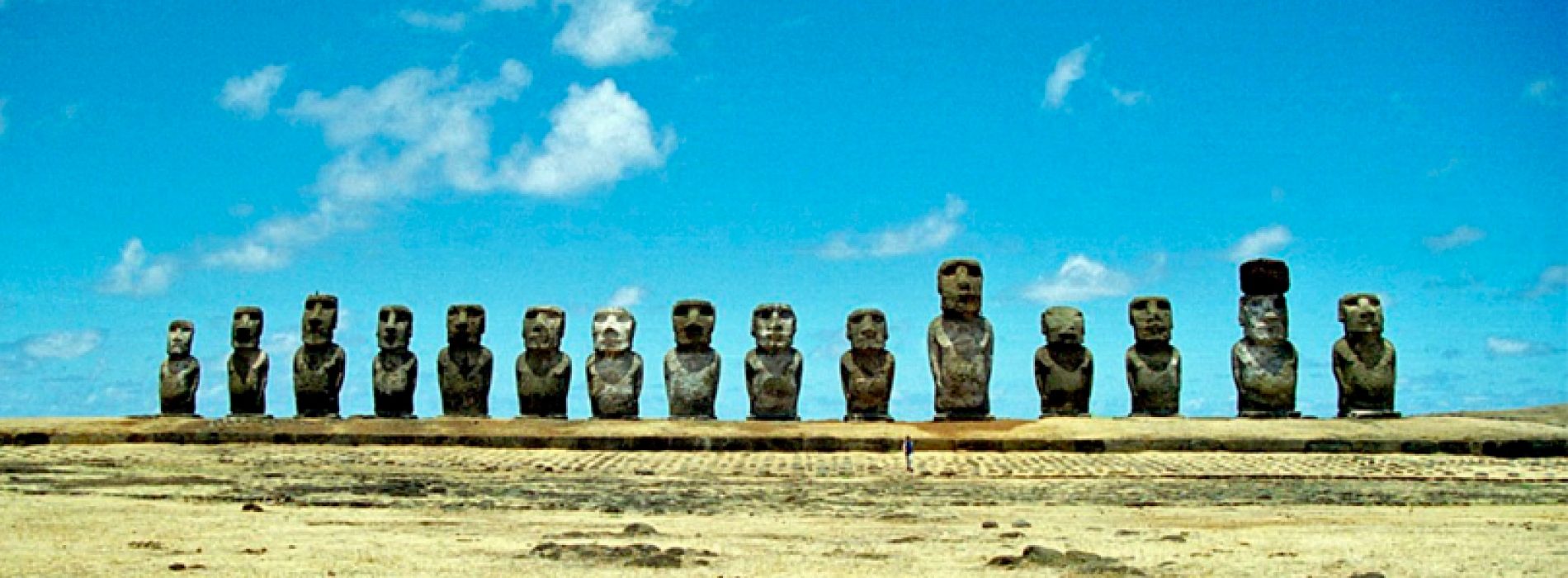Anthropology
Related: About this forumEASTER ISLAND'S ANCIENT SOCIETY MAY NOT HAVE COLLAPSED AS PREVIOUSLY THOUGHT
BY ARISTOS GEORGIOU ON 8/13/18 AT 12:00 AM
Located 2,300 miles off the coast of Chile and dotted with huge stone heads, remote Easter Island has long been a place of mystery.
The traditional narrative of its history suggests that it was populated by Polynesian seafarers who went on to build great things but then later destroyed their own society through infighting and over-exploitation of natural resources.
But a study published in the Journal of Pacific Archaeology, indicates that perhaps the story is more complex and the island’s society did not collapse in the way that has been previously suggested.
An international team of researchers analysed the chemical makeup of tools used to create the island's iconic large stone sculptures, finding evidence of a sophisticated civilization where people collaborated and shared information.
More:
https://www.newsweek.com/easter-islands-ancient-society-may-not-have-collapsed-previously-thought-1069950?piano_t=1
sinkingfeeling
(51,457 posts)the story that the natives died off because of over use of resources.
Judi Lynn
(160,542 posts)

Unbelievably mysterious to so many of us. Can't even imagine how great it must have been out there.
It's good to know that other people have certainly been considering far different explanations and thoughts about Rapa Nui.
Thanks for your post.

Funny tourists!







Wow! Etc.!
sinkingfeeling
(51,457 posts)so isolated. We were with 5 others in a tour group. I don't have a good way of uploading my photos from there. I'd have to do a couple through Flickr from my computer.
If you ever want to get away from the rat race and politics, I would recommend Easter Island or Antarctica.
Judi Lynn
(160,542 posts)By Megan Gannon, Live Science Contributor | August 13, 2018 04:00pm ET
In popular science literature, much ink has been spilled on the supposed collapse of Easter Island, or Rapa Nui, as it's known in the local language.
Jared Diamond's 2005 book "Collapse," for example, presents a chilling version of what happened in the centuries after Polynesian seafarers colonized the remote Pacific island around A.D. 1200: Rivalry between clans drove the islanders to build hundreds of increasingly big "moai," the larger-than-life statues carved from stone. This fierce competition and population growth caused a hubristic over-exploitation of resources, driving the Rapanui people to desperation, and even cannibalism, and Europeans arriving in the 18th century encountered a society well on its way to decline, according to Diamond's account.
But archaeologists who have been studying the ancient quarries, stone tools and other resources on the island have recently been building a different picture of what happened before European contact. A study published today (Aug. 13) in the Journal of Pacific Archaeology adds a new piece of evidence to the case against Rapa Nui's collapse. [Image Gallery: Walking Easter Island Statues]
Rapa Nui is probably most famous today for its 1,000 moai, the towering statues that were placed on platforms ("ahu" ) and sometimes adorned with colossal hats or topknots called "pukao." The monuments —which weigh as much as 82 tons (74 metric tons) and are found all over the island's coastal areas —were amazingly built without the help of wheels or large animals.
More:
https://www.livescience.com/63321-easter-island-collapse-myth.html?utm_source=notification